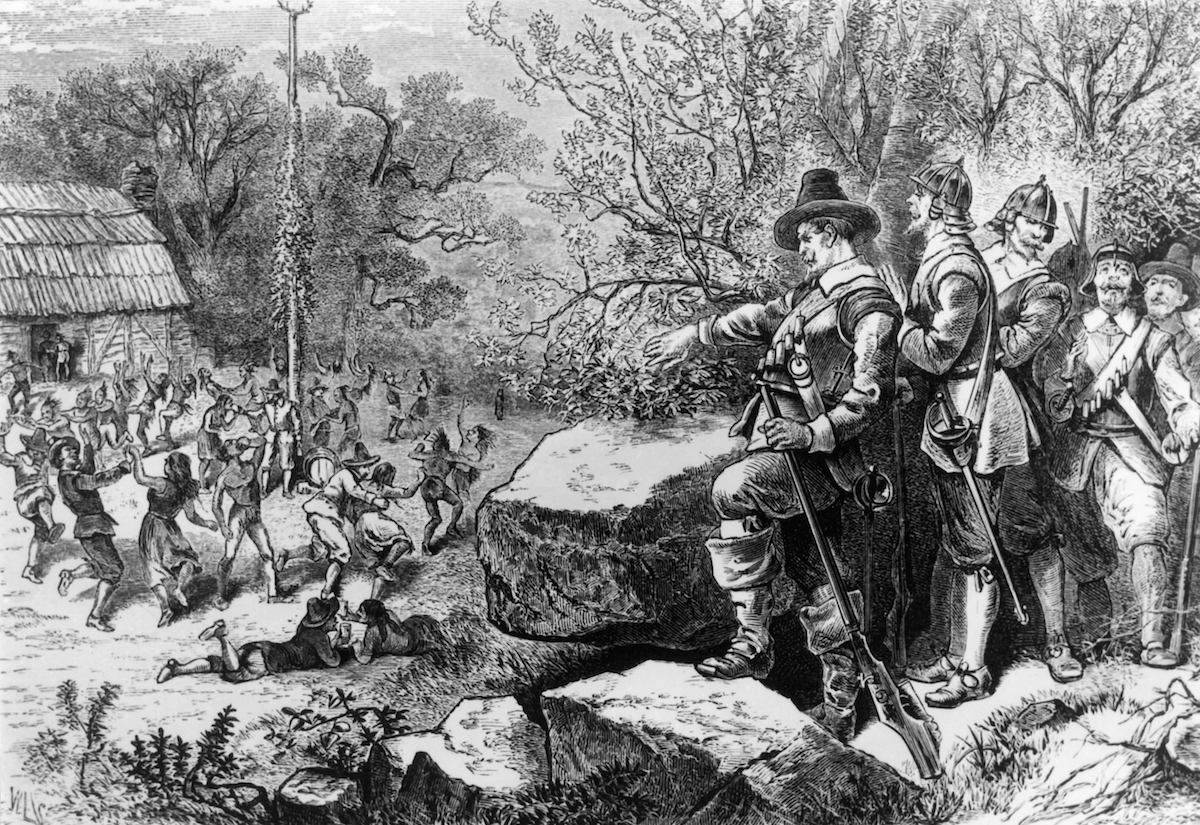
In the modern United States, May Day traditions of dancing around a maypole are seen as the height of innocence. If the first of May has any controversial implications, it’s for the date’s association with labor movements, socialism and communism.
But things were very different in the 17th century, when May Day was seen as downright sinister. According to the New England Historical Society, it all started when a man named Thomas Morton arrived in the New England colony from England in 1624. Unlike the puritans who had come to escape religious persecution, Morton was part of a trading expedition that set up shop in what’s now Quincy, Mass.
MORE: The Bloody Story of How May Day Became a Holiday for Workers
Here’s what happened next, as TIME told it in a 1970 essay:
In the spring of 1627, the Pilgrim settlement at Plymouth was scandalized when a rather different American named Thomas Morton decided to show the New World how to celebrate. At Merry Mount, which may have been America’s first counterculture community, Morton erected a Maypole—80 feet of priapic pine—and by his own account “brewed a barrel! of excellent beare” to be distributed with “other good cheare, for all commers of that day.” Other good cheare included Indian girls, according to “a song fitting to the time and present occasion” written by the host himself:
Lasses in beaver coats, come away,
Ye shall be welcome to us night and day.
Myles Standish, that well-known non-womanizer, accompanied by America’s first vice squad, interrupted the revels, which were subsequently described by Plymouth Governor William Bradford as “the beastly practices of the mad Bacchinalians.” Morton eventually was busted, placed in the stocks and returned to England in a state of mortifying near starvation.
Though he may have been busted, Morton made his side of the story known, in a text called New English Canaan that contrasted the “harmless mirth made by young men” and the strict ordinances of the Puritans who “[trouble] their brains more than reason would require about things that are indifferent.”
Get your history fix in one place: sign up for the weekly TIME History newsletter
The episode inspired the Nathaniel Hawthorne short story The Maypole of Merrymount; a 1930s opera written by Richard Leroy Stokes and Howard Hanson, called Merry Mount; and a 1960s Robert Lowell theater piece called Endecott and the Red Cross.
More Must-Reads From TIME
- The 100 Most Influential People of 2024
- Coco Gauff Is Playing for Herself Now
- Scenes From Pro-Palestinian Encampments Across U.S. Universities
- 6 Compliments That Land Every Time
- If You're Dating Right Now , You're Brave: Column
- The AI That Could Heal a Divided Internet
- Fallout Is a Brilliant Model for the Future of Video Game Adaptations
- Want Weekly Recs on What to Watch, Read, and More? Sign Up for Worth Your Time
Write to Lily Rothman at lily.rothman@time.com